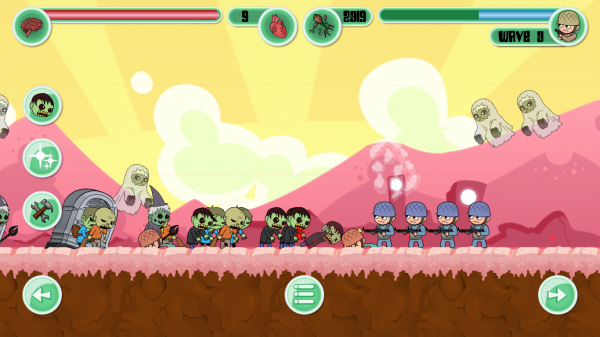Rob Grossberg, Co-Founder and CEO of TreSensa, Inc, is no stranger to HTML5 games. Tresensa has many HTML5 games in their own portfolio. He shares his thoughts about how HTML5 could help indie developers.
The sad truth within the Apple App Store and Google Play is that it is no longer enough to build an awesome game. There are thousands of absolutely awesome games in the app stores today that nobody is playing. The app store dead pool is alive and kicking with quality content in search of an audience. Discovery in the app stores is so tough these days that the only viable way to get someone to play your game is to pay one of the many mobile marketing services to drive installs of your game. As a result, a prerequisite for app store success today is a massive marketing budget to buy users (the current cost is in the $3 to $5 per install range), drive your game into the charts, and then pray it sticks. A large marketing budget is not even a remote possibility for the vast majority of game studios looking to become the next Supercell or Rovio. The app store economy is broken and it is the indie studios that are getting squeezed out.
It is no coincidence that as it has gotten tougher and tougher to succeed within the ecosystems of the app stores, companies (including mine!) would jump into the fray to bring game studios alternative means to reach people with gaming content on their mobile devices. So what’s the secret sauce? HTML5. Yes, that is the same HTML5 that took a beating a few years back, but has not gone away.
Over the past year, demand for HTML5 games, particularly HTML5 games that are mobile web optimized, has been rising. Online game portals such as Games.com, Yepi.com, Spil Games and Gamehouse.com have all shifted their focus to HTML5 and are actively seeking quality content for their sites and their millions of monthly users. The online Flash game ecosystem has woken up to the fact that mobile now needs to be core to their business, and the technology most portals are adopting to make the shift is HTML5.
In addition, many game stores like the Firefox Marketplace, Tizen, the Amazon Appstore and the Windows Phone Store are hungry for HTML5 games and often look to showcase and feature indie games. These stores may seem very small compared to Apple’s app store and Google Play, but good games can really stand out as “big fish” in these smaller ponds. Also, more and more media properties are starting to include HTML5 game content within their various mobile offerings. These are companies like Disney, Warner Bros., WWE, and HBO, that are already attracting large audiences on mobile and want to start supplying their users with the most engaging form of mobile content (games!) without pushing their users into the arms of Apple or Google. They are turning to HTML5 to do this.
A real benefit to these new areas for game distribution is that they are all based on a revenue share model, and thus do not require upfront marketing dollars to get your game in front of millions of consumers. In terms of monetization, the freemium model is the model of choice with advertising and in-game purchases driving revenue. And because the costs to produce and distribute these games is much lower than native games, studios have more leeway to extend creativity within the games themselves, as opposed to constantly pushing users to purchase points in order to attempt to recoup large upfront development and marketing costs.
Has there been a hit HTML5 game that has crushed it and turned its developer into a mega-millionaire? No. Are opportunities emerging for indies to make several thousand dollars per game per month with quality HTML5 games? Yes.
So indie developers are left with this – forge ahead with a native game, try your best to navigate the challenges within the app stores, and hope you are the next big thing, or pioneer emerging areas for mobile games by adopting HTML5 and hope you can be an early player in the next big thing for mobile games.







